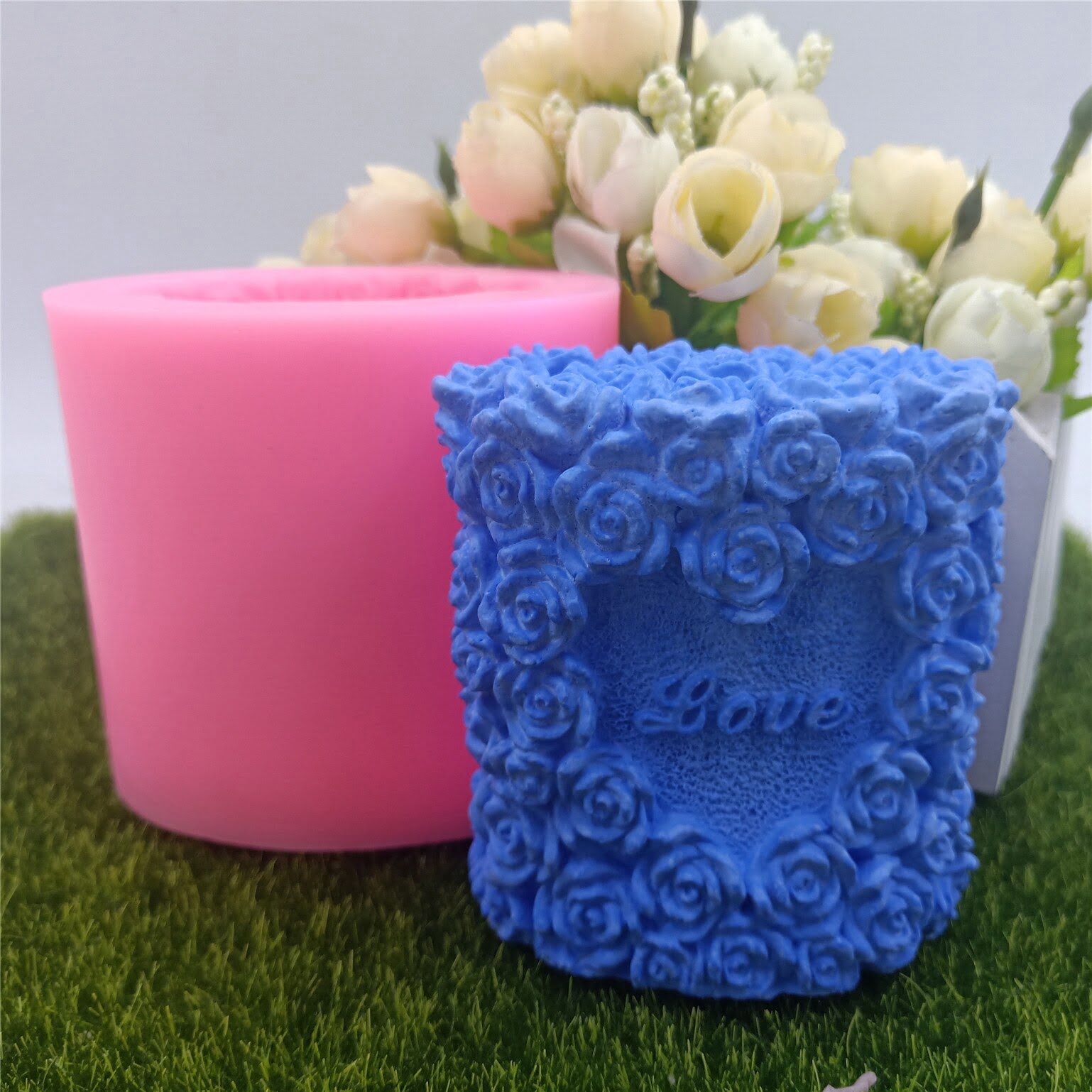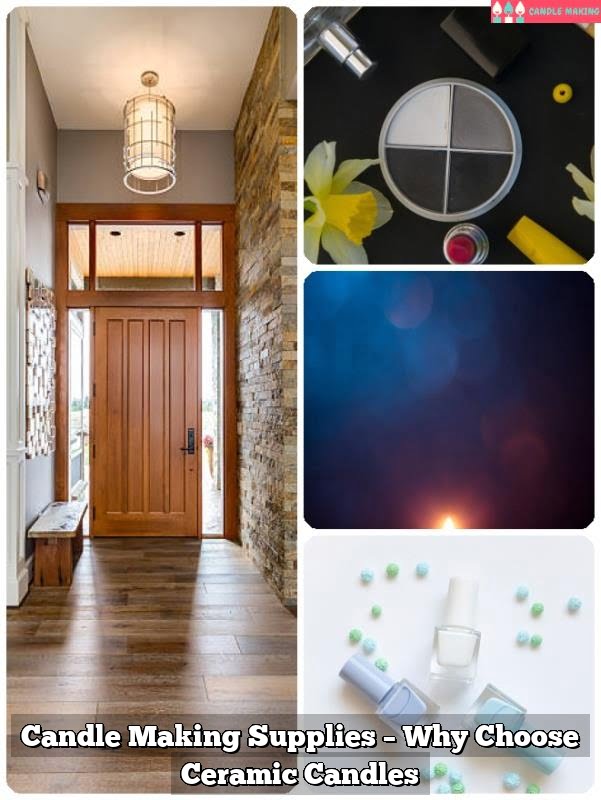Choosing the right wick for candle making is a crucial step in creating high-quality and well-performing candles. The choice of wick can greatly impact the overall burn time, flame height, and scent throw of a candle. In this article, we will delve into the various factors to consider when selecting a wick, including the type of candle, wax, and desired burn time.
When it comes to candle making, there are numerous options available in terms of wicks. From cotton to hemp to wood wicks, each type has its unique characteristics and benefits. Understanding these different wick types and their suitability for various candle styles is essential in achieving optimal performance.
Determining the appropriate wick size for your candle is another critical aspect to consider. The size of the wick directly affects how efficiently the candle burns, as well as its ability to provide a steady flame height. By measuring the diameter and depth of your candle correctly, you can select a wick size that ensures an even burn throughout.
Lastly, testing different wick options before finalizing your selection is vital in avoiding common issues such as tunneling or excessive soot. Conducting proper wick tests allows you to observe and record any issues that may arise from an incorrect choice of wick, empowering you to troubleshoot and adjust accordingly.
In this comprehensive guide, we will explore all these aspects of choosing the right wick for candle making. By understanding how each factor contributes to the overall quality of your candles, you will be able to create stunning creations that impress with their burn time consistency, flame height control, and captivating scents.
Understanding Different Wick Types
Cotton Wick
One of the most popular and widely used wick types in candle making is the cotton wick. Cotton wicks are known for their versatility and ability to burn cleanly. They come in various thicknesses, allowing you to choose a wick that matches the diameter of your candle. Cotton wicks also have a controlled curling when burning, which helps to minimize mushrooming and carbon buildup.
Hemp Wick
For those who prefer an alternative to cotton, hemp wicks are a great option. Hemp wicks offer a slower burn rate compared to cotton wicks, which can be advantageous for candles with larger diameters or longer burn times. Hemp is also an eco-friendly choice as it is derived from natural fibers and does not require the use of pesticides during cultivation.
Wood Wick
If you’re looking to create a unique and visually appealing candle, wood wicks are worth considering. These wicks are made from sustainably sourced wood and provide a crackling sound reminiscent of a cozy fireplace when burning. Wood wicks require some special considerations, as they may need to be trimmed more frequently than other types of wicks. However, they can add character and charm to your candle creations.
When choosing between different types of wicks, it’s important to consider factors such as burn time, scent throw, and personal preference. Each type of wick has its own distinct characteristics and benefits that can enhance your candle-making experience. Experimentation with different types of wicks will help you find the one that suits your specific needs and desired outcomes for your candles.
Determining Wick Size
When it comes to candle making, selecting the appropriate wick size is crucial for achieving the desired burn performance and overall quality of your candles. The right wick size will ensure that your candle burns evenly, with a clean and steady flame. Here are some tips and techniques for determining the perfect wick size for your candle.
- Measure the diameter of your container or pillar: Use a ruler or caliper to measure the width of the opening where the wax will be poured. This measurement will help you determine the appropriate wick size. It is important to note that larger diameter containers may require multiple wicks to achieve an even burn.
- Consider the depth of your candle: The height of your candle also affects wick selection. A deeper candle may require a longer wick to ensure proper burning all the way down.
- Consult a wick guide: Many manufacturers provide wick guides or charts that recommend specific wick sizes based on container diameter and depth. These guides are helpful starting points but do not substitute for conducting your own tests.
- Conduct a burn test: Before settling on a particular wick, it is essential to conduct burn tests with different sizes to determine which one provides optimal performance. Burn each test candle for a few hours and evaluate factors such as flame stability, melt pool formation, soot production, and scent throw.
| Container Diameter (in inches) | Wick Size |
|---|---|
| 2-2.5 | WCS 32 |
| 2.5-3 | WCS 34 |
| 3-3.5 | WCS 36 |
| 3.5-4 | WCS 38 |
| Above 4 | Consider multiple wicks or consult a wick manufacturer |
Remember, selecting the right wick involves some experimentation and fine-tuning. Every candlemaker’s process and materials may vary, so it is important to keep detailed records of your wick tests to refer to when making future candles. By taking the time to determine the perfect wick size for each individual candle, you can ensure that your creations burn beautifully and deliver a delightful experience for those who enjoy them.
Considering Candle Type
When it comes to choosing the right wick for candle making, it is important to consider the type of candle you are making. The choice of wick can vary depending on whether you are creating container candles or pillar candles. Each type of candle has its own unique characteristics and requirements. Understanding the differences will help you select the most suitable wick for your specific candle type.
Container Candles
Container candles are made by pouring melted wax into a container such as a jar or tin. The container helps hold the melted wax, making it easier to burn the candle without worrying about any dripping wax. When choosing a wick for container candles, it is crucial to select one that will burn evenly and reach all areas of the container.
Generally, cotton wicks are recommended for container candles as they provide a steady and consistent burn. They come in various sizes, ranging from small to large, which allows you to match the appropriate size with your container diameter.
Keep in mind that different wax types may require different sizes of cotton wicks due to variations in their melting points and composition. It is therefore essential to consider not only the size but also the type of cotton wick when selecting one for your container candles.
Pillar Candles
Pillar candles are freestanding candles that do not require containers. They are typically wider than container candles and are often used as decorative pieces or centerpieces. Unlike container candles, pillar candles need a sturdier wick that can withstand a larger flame and provide an even burn throughout its lifespan.
For pillar candles, braided cotton wicks or square braid wicks are commonly used because they offer better stability and maintain their shape during burning. These types of wicks also give consistent performance in terms of flame height and burn rate. When selecting a wick for pillar candles, consider their thickness along with the diameter and height of your candle to ensure a proper fit and optimum burn performance.
By considering the specific considerations for container candles and pillar candles, you can choose the right wick that will allow your candles to burn evenly and provide optimal performance. Remember that experimentation may be necessary to find the perfect wick for your unique candle creations.
Exploring Wick Materials
When it comes to candle making, the choice of wick material is an important consideration that can greatly impact the performance and quality of your candles. There are several different wick materials available in the market, each with its own unique characteristics and benefits.
One popular option for wick material is cotton. Cotton wicks are widely used in candle making due to their versatility and availability. They are known for providing a consistent burn and producing minimal soot. Cotton wicks also have a good scent throw, meaning they allow for the fragrance of the candle to be released effectively. However, one downside to cotton wicks is that they can sometimes require trimming to prevent mushrooming and maintain an even burn.
Another option to consider is hemp wicks. Hemp wicks are made from natural fibers derived from the hemp plant. They are known for their clean burn and ability to produce a steady flame. Hemp wicks also tend to have a slower burn rate, which can be beneficial if you want your candles to last longer. Additionally, hemp wicks are considered more sustainable than cotton wicks as hemp is a renewable resource.
Wooden wicks are another interesting choice for candle makers. These wicks add a unique aesthetic appeal to candles with their crackling sound when burning. Wooden wicks also have excellent scent throw capabilities due to their wide flame surface area. Additionally, wooden wicks tend to provide a faster burn rate compared to cotton or hemp wicks, which can be advantageous if you want a strong fragrance throw in a shorter period of time.
When choosing the right Wick material for your candles, it’s important to consider factors such as burn characteristics, sustainability, and cost. Each material has its own pros and cons that need to be evaluated based on your specific needs and preferences. Ultimately, experimenting with different Wick materials can help you find the perfect fit for your unique candle creations.
Understanding Burn Time and Flame Height
When it comes to candle making, understanding burn time and flame height is crucial in order to achieve the desired performance and aesthetics of your candles. The choice of wick plays a significant role in determining these factors, as different wick sizes and materials can affect how long your candle burns and the height of its flame.
Burn time refers to the length of time a candle can continuously burn before it extinguishes. This is influenced by the size and type of wick used, as well as other factors such as the type of wax and fragrance load.
A larger wick will generally result in a faster burn rate, while a smaller wick will extend the burn time. It is important to consider the intended purpose of your candle when selecting a wick – for example, if you want a candle that lasts for several hours, you would choose a thicker wick.
Flame height is another important aspect to consider when choosing a wick. The height of the flame can impact not only the visual appeal but also the safety of your candle. A too small flame might not provide enough light or fragrance release, while an excessively large flame can be dangerous and lead to soot buildup or uneven burning. It is recommended to choose a wick that produces a steady and controlled flame with minimal flickering.
To achieve optimum performance in terms of burn time and flame height, it is essential to conduct proper testing before finalizing your choice of wick. Wick testing involves burning candles with various types and sizes of wicks to observe their burn characteristics over time. This allows you to determine which combination provides the desired results for your specific candle recipe.
By understanding burn time and flame height, and conducting thorough testing, you can select the right wick that will ensure optimal performance and quality for your handmade candles.
| Factors | Burn Time | Flame Height |
|---|---|---|
| Wick Size | A larger wick generally results in a faster burn rate, while a smaller wick extends the burn time. | A properly sized wick produces a steady and controlled flame with minimal flickering. |
| Wax Type | Different wax types can influence the burn time of a candle. For example, soy wax tends to have longer burn times compared to paraffin wax. | The type of wax can also affect the flame height, with certain waxes producing taller flames than others. |
| Fragrance Load | The amount and type of fragrance added to the candle can impact its burn time. Heavier fragrance loads can potentially shorten the overall burn time. | The choice of fragrance can influence flame height as well, with some fragrances causing taller or more vigorous flames. |
Testing Different Wick Options
When it comes to choosing the right wick for your candle, testing different options is crucial. Conducting wick tests allows you to evaluate and compare the performance of different wicks, ensuring that you select the one that best suits your specific candle-making needs. Here are some important tips and techniques for properly testing different wick options:
- Choose a variety of wicks: Start by selecting a range of wicks that you believe might work well with your particular candle type and wax. It’s recommended to include a few different sizes and materials in your test selection.
- Prepare your candles: Create several test candles using the same batch of wax and fragrance, but with each containing a different wick option. Make sure all other variables, such as container size and color, remain constant across the test candles.
- Conduct burn tests: Light one candle at a time and observe its performance. Pay attention to key factors like flame height, burn rate, melt pool width, scent throw, and any signs of tunneling or excessive sooting.
- Record observations: Keep a journal or notebook dedicated to recording your observations during each burn test. This will help you accurately compare the performance of different wicks and identify any trends or patterns.
- Make adjustments if needed: Depending on the results of your initial burn tests, you may need to make adjustments to either the type or size of the wick used in each candle. This process may involve repeating certain test burns with modified variables until you achieve optimal results.
- Consider feedback from others: If possible, seek input from fellow candle makers or customers who have experience with candle burning. Their feedback can provide valuable insights that may lead you to choose a different wick option or make additional modifications.
Remember that proper observation is key when conducting these tests; be patient and allow sufficient time for each candle to burn through completely before making any final judgments about their performance. By testing different wick options, you can ensure that you have chosen the perfect wick for your candle-making endeavors.
Troubleshooting Common Wick Issues
Even with careful consideration and selection of the right wick for your candle, you may still encounter some common issues during the burning process. These issues can affect the overall performance and enjoyment of your candle, but don’t worry – there are solutions. In this section, we will address some common problems that may arise due to an incorrect choice of wick and provide troubleshooting tips to help you overcome them.
One common issue that candle makers often encounter is tunneling. Tunneling refers to the formation of a hole in the middle of the candle while leaving a rim of unburned wax around the edge. This can occur when the wick is too small for the diameter of the candle or when there are drafty conditions causing uneven heat distribution.
To troubleshoot this problem, try trimming the wick slightly to create a larger flame that melts more wax evenly across the surface. Additionally, ensure that you burn your candle for long enough periods (approximately 1 hour per inch in diameter) to allow for a full melt pool.
Excessive soot is another issue that can result from an incorrect choice of wick. Soot refers to black residue that forms along the rim or sides of your container or pillar candles. It can be caused by using a wick that is too large or by impurities in low-quality wicks.
To reduce soot production, make sure to trim your wicks before each burn to prevent them from becoming too long and creating an oversized flame. It’s also important to use high-quality, well-made wicks that are specifically designed for clean combustion.
Poor scent throw is another common problem that can arise when using an incorrect wick size. Scent throw refers to the amount and intensity at which fragrance is released into the surrounding space while burning a scented candle. If you’re experiencing poor scent throw, it could be because your wick is too large, causing the fragrance oil to burn too quickly and not allowing it to disperse properly.
To improve scent throw, try using a smaller wick size that allows for a slower, more controlled burn. Additionally, consider adjusting the amount of fragrance oil you use in your candle to achieve the desired scent level.
By recognizing and troubleshooting common wick issues, you can enhance the performance and quality of your candles. Remember that experimentation and observation are key in finding the perfect solution for your unique candle creations. Don’t be discouraged if you encounter problems along the way – learning from these experiences will only make you a more skilled candle maker.
Final Thoughts
In conclusion, choosing the right wick for candle making is a crucial step that greatly impacts the overall performance and quality of your candles. By considering factors such as candle type, wax type, desired burn time, and flame height, you can find the perfect wick that suits your unique candle creations.
Understanding the different types of wicks available in the market is essential. Cotton wicks are the most common choice due to their versatility and reliable burn performance. Hemp wicks offer a slower burn rate and are great for longer-lasting candles. Wood wicks provide a crackling sound and visually appealing flame that adds a touch of ambiance to your candles.
Determining the right wick size is equally important. Measuring the diameter and depth of your candle accurately will help you select a wick that promotes an even burn without tunneling or excessive soot. Conducting thorough tests with different wick options is highly recommended to ensure you achieve optimum performance in terms of burn time and flame height.
Lastly, it’s crucial to troubleshoot any issues that may arise due to an incorrect choice of wick. Tunneling, excessive soot, and poor scent throw are common problems that can be overcome with troubleshooting techniques such as adjusting wick size or trimming the wick properly.
In your journey of making candles, remember to experiment and learn from your experiences. Each candle creation is unique, and finding the perfect wick requires patience and creativity. By considering all the factors mentioned here and conducting proper tests, you’ll be able to choose the perfect wick for your candle creations, ensuring they burn beautifully every time.
Frequently Asked Questions
How do you know what size wick to use for a candle?
Determining the appropriate wick size for a candle requires considering various factors, primarily the diameter of the candle container. Typically, wick sizes are provided by candle supply stores or manufacturers. The size is usually denoted as a numerical value, such as “6” or “10,” which corresponds to the diameter range of candles that particular wick is suitable for.
It’s crucial to match the wick diameter with the size of your container to achieve an optimal burn and prevent any issues like tunneling or excessive smoke. Additionally, considering the type and composition of wax used can also influence wick selection.
What wick is best for soy wax?
When it comes to soy wax candles, selecting the right wick is vital for achieving optimal burning characteristics and proper scent throw. Generally, cotton wicks are commonly recommended for soy wax due to their clean-burning properties and ability to promote even melt pool formation.
Specifically, cotton core wicks or those made entirely of cotton perform well in soy wax formulations. The exact thickness or size of cotton wick will depend on factors such as your container size and desired burn rate.
How many wicks do I need for a 6 inch candle?
The number of wicks needed for a 6-inch candle depends on several factors such as its shape, design, fragrance load, type of wax used, and personal preferences regarding burn time and aesthetics. As a general guideline for jarred candles using standard-sized wicks (excluding multiple-wick options), one wick would typically suffice for a 6-inch diameter jar candle.
However, if you’re using specialty molds or custom designs that require longer burn times or more evenly distributed heat throughout the container, you might consider using multiple smaller-sized wicks instead of a single larger one. Ultimately, experimentation may be required to determine the perfect number and placement of wicks for your specific candle creation.

Welcome to my candle making blog! In this blog, I will be sharing my tips and tricks for making candles. I will also be sharing some of my favorite recipes.





